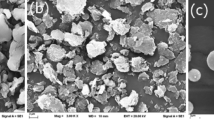Abstract
This study presents the results of an experimental campaign with the aim of investigating the hydrophobic protection of three substrates (stone, render, and external thermal insulation composite system—ETICS) with the application of three hydrophobic products: silicon and titanium dioxides-based nanostructured dispersion (HNST); a silane/oligomeric siloxane (HSila/Silox); and a siloxane (HSilox). To determine the effectiveness of the hydrophobic treatments, specimens of the untreated and treated wall coatings were characterized with different laboratory tests. The results showed that all products introduced significant improvements in the hydric properties of the substrates, leading to lower capillary water absorption (98%), water permeability with Karsten pipes (99%), drying index (39%), and higher water repellency assessed through the contact angle (283%). The application of hydrophobic materials also had a negative effect, leading to up to a 227% increase in resistance to water vapor diffusion. Among the assessed wall coatings, the rendering mortar appears to have the best initial performance after the application of all the types of hydrophobic materials tested. In general, the hydrophobic product HSilox was proved to be the most suitable for rendering mortars, while HNST was more appropriate for stone substrates.



Similar content being viewed by others
References
Li, Y, Ren, S, Building Decorative Materials, Architectural Coatings. In: Woodhead publishing series in civil and structural engineering (2011)
Pukhkal, V, “Humidity conditions for exterior walls insulation (case study of residential housing development in Saint-Petersburg).” In: Procedia Engineering, International scientific Conference Urban Civil Engineering and Municipal Facilities, 2015
Jerman, M, Černý, R, “Effect of Moisture Content on Heat and Moisture Transport and Storage Properties of Thermal Insulation Materials.” Energ Buildings, 53 39–46 (2012)
Pavlík, Z, Žumár, J, Medved, I, Černý, R, “Water Vapor Adsorption in Porous Building Materials: Experimental Measurement and Theoretical Analysis.” Transport Porous Med., 91 (3) 939–954 (2012)
Duarte, R, Flores-Colen, I, de Brito, J, “In situ testing techniques for in-service evaluation of water penetration in rendered façades-the portable moisture meter and Karsten tube.” In: 12th DBMC International Conference on Durability of Building Materials and Components, Porto, Portugal, 2011.
Lepech, M, Li, V, “Water permeability of engineered cementitious composites.” Cement Concrete Comp., 31 (10) 744–753 (2009)
Roos, M, Konig, F, Stadtmuller, S, Weyershausen, B, “Evolution of silicone based water repellents for modern building protection.” Hydrophobe V. In: 5th International Conference on Water Repellent Treatment of Building Materials. Aedificatio Publishers, Brussels, Belgium, 2008
Sacchi, B, Malesci, I, Rosi, L, Fresiani, M, Giuntoli, G, Pedna, A, Fresiani, P, Deterioration and Protection of Historic and Artistic Stones: The Role of Synthetic Polymers. In: Cultural Heritage: Protection, Developments and International Perspectives. Nova Publisher (2013)
Othman, NL, Jaafar, M, Harun, WM, Ibrahim, F, “A Case Study on Moisture Problems and Building Defects.” Procedia Soc. Behav. Sci., 170 27–36 (2015)
Silva, L, Flores-Colen, I, Vieira, N, Timmons, AB “Natural ageing tests to study in-service water resistance of pre-mixed one-coat rendered walls with hydrophobic agents.” In: International Conference on Durability of Building Materials and Components, Porto, Portugal, 2011
Vries, J, Polder, R, “Hydrophobic Treatment of Concrete.” Constr. Build. Mater., 11 (4) 259–265 (1997)
Selley, D, “Chemical Considerations for Making Low-VOC Silicon-Based Water Repellents.” J. Coat. Technol. Res., 7 (1) 26–35 (2010)
Correia, J, Baltazar, L, Rodrigues, M, “Hydrophobic Protection for Concrete: Short-Term Performance and Durability.” J. Restor. Build. Monum., 19 (4) 267–278 (2012)
Pinto, A, “Conservation of granite stone. Study of water repellent action (in Portuguese).” ITG 22, LNEC, Lisboa 193p. (1997)
Finzel, W, Vincent, H, “Silicones in Coatings.” Federation Series on Coatings Technology, Philadelphia (1996)
Edwards, P, “Preservation for the Future: The Need for Waterproofing Structures Above and Below Ground.” J. Protect. Coat. Linings, 7 (12) 42–46 (2002)
Couto, S, “Utilização de hidrófugos de superfície em materiais cerâmicos. Influência na secagem.” Master dissertation, Instituto Superior de Engenharia Civil de Lisboa (2010)
BSEN1015-18 (2002) Methods of test for mortar for masonry. Determination of water absorption coefficient due to capillary action of hardened mortar
ETAG004 (2013) Guideline for European technical approval of external thermal insulation composite systems (ETICS) with rendering
RILEMTC25-PEM (1980) Evaporation curve, Test No II. 5, Recommandations provisoires
RILEMTC25-PEM (1980) Water absorption under low pressure, Pipe method, Test No II. 4, Recommandations provisoires
BSEN1015-19 (1999) Methods of test for mortar for masonry. Determination of water vapour permeability of hardened rendering and plastering mortars
ASTMD5590 (2010) Standard test method for determining the resistance of paint films and related coatings to fungal defacement by accelerated four-week
BSEN15802 (2009) Conservation of cultural property. Test methods. Determination of static contact angle
Carver, SJ, “Integrating Multi-criteria Evaluation with Geographical Information Systems.” IJGIS, 5 (3) 321–339 (1991)
Jankowski, P, “Integrating Geographical Information Systems and Multiple Criteria Decision-Making Methods.” IJGIS, 9 (3) 251–273 (1995)
Acknowledgments
Acknowledgments to CERIS research unit from IST, REuSE project from LNEC, refª 0803/112/19461, and WGB Shield project from FCT, refª PTDC/ECI-EGC/30681/2017. The authors wish to thank Dr. Dória Costa, Dr. Lina Nunes from National Laboratory for Civil Engineering (LNEC) for performing the contact angle and biological colonization tests, respectively, and Eng. Sofia Malanho and the technicians for their support in the experimental work from LNEC. The authors acknowledge Weber, NanoPhos, and CIN manufacturers for the hydrophobic products.
Author information
Authors and Affiliations
Corresponding author
Additional information
Publisher's Note
Springer Nature remains neutral with regard to jurisdictional claims in published maps and institutional affiliations.
Rights and permissions
About this article
Cite this article
Esteves, C., Ahmed, H., Flores-Colen, I. et al. The influence of hydrophobic protection on building exterior claddings. J Coat Technol Res 16, 1379–1388 (2019). https://doi.org/10.1007/s11998-019-00220-7
Published:
Issue Date:
DOI: https://doi.org/10.1007/s11998-019-00220-7




